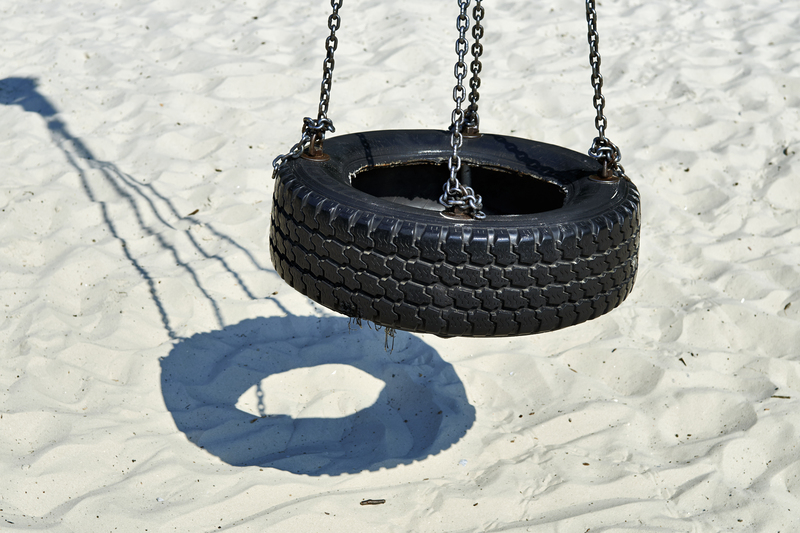Learn How to Slash Green Waste with These 10 Techniques
Growing environmental concerns are urging individuals and communities to find effective ways to manage waste. Among various types of waste, green waste, comprising garden and food scraps, significantly contributes to the overall waste generated. Implementing strategies to reduce green waste not only benefits the environment but can also offer economic advantages. In this article, we explore ten effective techniques to help you reduce green waste effortlessly.
1. Composting: Nature's Recycling
Composting is a well-known method for minimizing green waste, turning organic waste into nutrient-rich compost. This technique leverages natural decay processes to recycle kitchen scraps and yard debris into valuable soil enhancer.
How to Start Composting?
- Choose a designated spot for your compost pile or bin.
- Layer green waste like vegetable peels, grass clippings, and brown material such as dried leaves or paper.
- Keep the pile moist but not soggy, and turn it regularly to aerate and speed up decomposition.
Over time, this not only trims down green waste but enriches your garden soil, enhancing plant growth.

2. Vermicomposting: The Power of Worms
Take composting a step further with vermicomposting. By using special composting worms, you can rapidly turn kitchen scraps into a high-quality compost called worm castings.
Starting Your Vermicompost:
- Use a worm bin or any aerated container.
- Introduce composting worms (red wigglers are popular).
- Feed them regularly with small amounts of organic waste.
- Harvest the compost every few months.
The nutrient-dense compost produced can be used to nourish plants or sold as an organic fertilizer.
3. Grasscycling: A Simple Lawn Solution
After mowing your lawn, resist the urge to bag the clippings. Instead, practice grasscycling. This technique involves leaving lawn clippings on the grass, where they decompose quickly, returning essential nutrients to the soil.
Benefits of Grasscycling:
- Reduces the need for chemical fertilizers.
- Saves time and effort by eliminating bagging.
- Keeps grass healthy and lush.
This simple practice is a win-win for your lawn care routine and the environment.
4. Mulching: Blanket Your Garden
Turn garden waste into a powerful ally using mulching. This involves covering the soil around plants with organic materials, like shredded leaves or wood chips.
Mulching Advantages:
- Suppresses weed growth.
- Retains soil moisture.
- Improves soil fertility.
Not only does mulching help cut down on green waste, but it also enhances plant health and garden aesthetics.
5. Smart Cooking and Meal Planning
Much of the green waste comes from food scraps. Smart cooking and meal planning can significantly cut down on this by reducing food waste.
Tips for Reducing Food Waste:
- Plan meals around what you already have.
- Store food correctly to extend shelf life.
- Use leftovers creatively.
- Buy only what you need to prevent spoilage.
Implementing these strategies in the kitchen can drastically decrease the amount of waste generated daily.
6. Community Green Waste Initiatives
Join or support community initiatives aimed at tackling green waste. From neighborhood composting programs to local garden waste collection, collaboration can enhance waste management efforts.
Engaging with Community Programs:
- Participate in local composting workshops.
- Encourage community gardens using shared compost.
- Engage in green waste awareness campaigns.
Community-driven projects harness collective action, making a significant impact on reducing green waste.
7. Grow Your Own Food
Embrace sustainability by growing your own food, which notably reduces packaging waste and green waste from unsold produce.
Starting a Home Garden:
- Identify suitable crops for your climate and space.
- Utilize composted materials to enrich your garden soil.
- Implement crop rotation to maintain soil health.
Home gardening provides a bounty of fresh produce while cutting down on waste.
8. Reuse and Recycle Yard Waste
Get creative with yard waste before banishing it to the curb. Leaves, branches, and logs can be repurposed in numerous ways to minimize waste.
Ideas for Reusing Yard Waste:
- Turn branches into garden trellises or decorative elements.
- Use large leaves as natural mulch.
- Craft garden beds using logs.
Embracing these innovative uses extends the life and functionality of what might otherwise be discarded.
9. Use Disposables Wisely
While going zero-waste is ideal, sometimes disposables are unavoidable. Learn to use disposables wisely to minimize their environmental damage.
Tips for Smart Disposable Usage:
- Opt for biodegradable or compostable options.
- Properly separate and recycle disposable products.
- Limit disposable usage to necessity rather than convenience.
A mindful approach can significantly reduce the footprint of disposables in the green waste stream.

10. Educate and Advocate for Change
Awareness is a powerful tool in the fight against green waste. Spread the word about effective waste reduction methods within your network.
How to Become an Advocate:
- Share knowledge through blogs, social media, and community events.
- Collaborate with local organizations to bring awareness.
- Encourage schools and businesses to adopt green waste policies.
By educating others, you multiply the efforts to slash green waste, contributing to a greener, more sustainable planet.
Conclusion
Combating green waste doesn't have to be daunting. By adopting these ten techniques, you can effectively minimize waste, benefiting both your local environment and the planet. Start small, be consistent, and watch as your efforts yield significant results in reducing green waste.